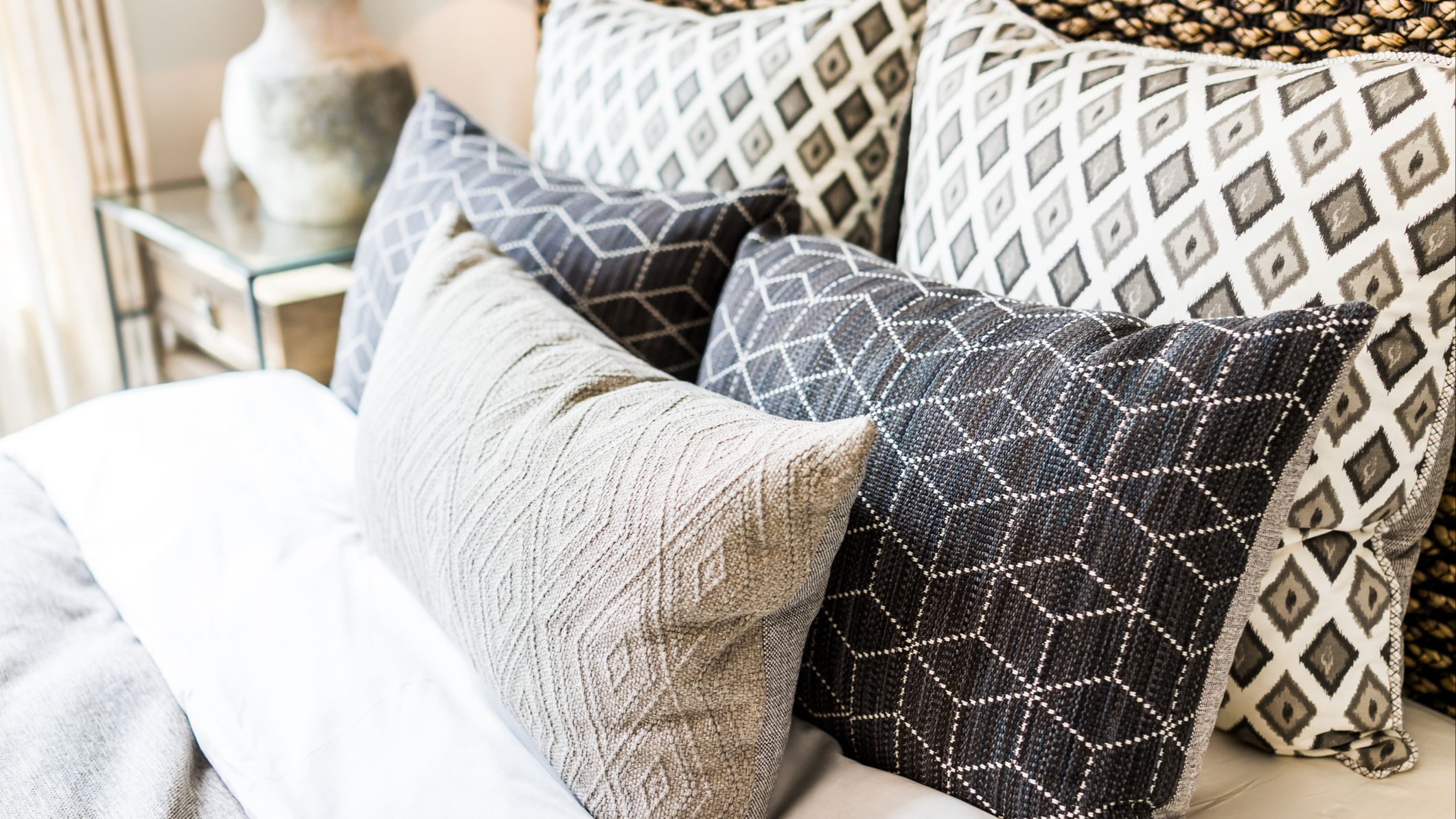From Home Decor to Interiors: A New Way to Share Your Work
Oct 28, 2025
If you’re an artist or surface designer creating for the home decor space, you might be wondering what’s next. Maybe you’ve sold prints or pillows, worked with small shops, or done one-off collaborations, but haven’t quite stepped into the world of interiors. Maybe you haven’t even heard of interiors as a separate market, or didn’t realize there was a difference. You're not alone. For many artists, this part of the design world feels a little mysterious at first, but it's full of meaningful opportunities once you understand how it works.
Interiors is a different space with different expectations, and for many artists, it opens up new and rewarding ways to share their work. At Kindly Woven, we’ve guided surface designers through that transition through our Studio Intensive, where artists learn how to design for wovens and create more durable home decor and interiors products.
So if you're curious about how art fits into the broader interior design industry, here’s an introduction to what’s possible.
Home Decor vs. Interiors: What’s the Difference?
The terms can sound similar, but they serve different timelines and purposes.
Home decor is typically made for individual customers and sold through retail. Products often have a shorter shelf life, around two to five years, with trend-driven colors and styles that refresh more frequently. In the Studio Intensive, we teach how to create home decor pieces with more longevity—using wovens and thoughtful design choices that help your work stand the test of time.
Interiors refers to products designed to have a longer lifecycle, typically five to ten years. These collections focus on durability, timeless color palettes, and materials that can stand up to years of use in both residential and commercial spaces. Much of that longevity comes from woven construction. Woven textiles are the foundation of many interiors applications, creating the structure, feel, and durability needed for upholstery, drapery, and soft goods that last.
You can think of it like this: Interiors are the skeleton and muscles—the structure that supports everything. Home decor is the clothing and accessories that express personality. Both matter, and together they bring a space to life.
If you’ve been creating for home decor, you’re not starting over. You’re simply learning how to adapt your artwork into formats, like wovens, that extend its lifespan and open new opportunities in the interiors space.
The 4 Paths Into the Interiors Market
There’s no single right way to enter the interiors world, but here are four common paths artists take.
- Selling Your Artwork (Licensing and Buyouts)
This is a great place to start if you’re creating strong standalone artwork or repeating patterns. Companies in the interiors market are always looking for fresh visuals, whether that’s art for the wall, patterns for wallpaper, or graphics for textiles.
You can license your work, where you retain the rights and get paid per use, or sell it outright, known as a buyout. Both options can be valuable. What matters most is understanding how to price your work and who you’re selling it to.
- Custom Work with Interior Designers
Interior designers often know exactly what they’re looking for but can’t always find it in the market. Custom collaborations are a way to fill those gaps, whether it’s adjusting an existing design to match a client’s palette or creating something entirely new that fits a specific vision. When you step in with a custom solution, you solve a design problem and open the door to future work.
- Launching a Line of Products
If you’re ready to step into the product world, you might consider creating your own line of goods suited for longer-cycle interiors use. Think wallpaper, wall coverings, or woven textiles for soft furnishings. This path takes more planning, but it gives you creative control and the ability to build a recognizable brand that speaks to interior designers, boutiques, and showrooms.
- Creating a Fabric Line
Creating a fabric collection is one of the more exciting ways to enter interiors. These collections are used in upholstery, drapery, and other soft furnishings, and they often live in showrooms where designers can browse and buy. You can build a line independently or partner with a fabric company that handles production and distribution. It takes planning and clarity around your design voice, but for the right artist, it can open up meaningful new opportunities.
Getting the Support to Go Further
If all of this feels like a lot to take in, you’re not alone. Interiors isn’t just a new audience, it’s a different product lifecycle that often begins with understanding how materials like wovens function in long-term use. Each of these paths comes with its own set of details, and it can be hard to know where to begin. That’s exactly why we created the Studio Intensive.
Each artist who has come through the program started with a strong creative voice. Through the Studio Intensive, they gained the tools and confidence to design for wovens, develop more durable home decor and interiors products, and pitch their work with clarity. It’s not about changing your style. It’s about understanding the context your work will live in and how to communicate with the people who are looking for it.
Want to Learn More?
We’re here to help you grow your practice with clarity and confidence. If one of these paths sparked your interest, we’d love to support you in taking the next step. You can join the waitlist for the next Studio Intensive, or if you’re just starting to explore, subscribe to our newsletter to stay in the loop as we share new resources and updates.
Your work deserves to live in beautiful, meaningful spaces, and we’d love to help you get there.
